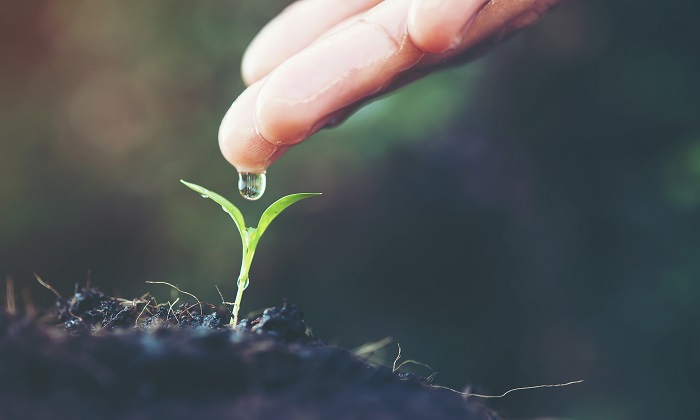
What is Carnatic Music? How long does it take to learn Carnatic Music? How should one learn Carnatic Music? These are some of the questions that a student of Carnatic Music has in mind before starting the classes. Learning Carnatic Music online or face-to-face, each have their own advantages and pitfalls. Before we get there, let us understand some fundamental concepts of the musical system.
Carnatic Music
Carnatic Music is a complete and evolved melodic system, which traces its roots to the Vedic times. This highly organised musical system is intricate that demands the right musical aptitude, attitude, patience and perseverance from a student.
Fundamentals of Carnatic Music
The basic fundamental building blocks of Indian Classical Musical system are Shruti and Laya. Shruti is the pitch used for reference, that which is heard, in Carnatic Music. “Shrutir Matah, Laya Pitah”, which means Shruti is the mother and Laya, the father of the musical system. Laya is the time element between two counts, invisible to the eye, but the existence of time intervals can be experienced.
Basic building blocks of the musical system
The sapta swaras or seven swaras are Shadja(Sa), Rishabha(Ri), Gandhara(Ga), Madhyama(Ma), Panchama(Pa), Daivata(Da), Nishada(Ni). It is also said these seven swaras emerged from the calls and sounds of animals and birds. Sa emerged from Peacock, Ri from Bull, Ga from goat, Ma from the dove, Pa from the Cuckoo, Da from the horse, and Ni from the elephant.
What are the basic lessons in Carnatic Music?
Sarali varasais - These are the simplest patterns introduced to a student of music in the initial stages of learning. Starting with the seven swaras arranged in ascending and descending orders, the lessons proceed gradually to make simple permutations and combinations using these swaras.
Janti varasais - These are patterns where in the swaras are pronounced or sung twice each, in groups of two or more. These help in attaining perfection over the swara sthanas while repeating them.
Mandrasthayi varasai - These are exercises that explore the lower octaves.
Tara Sthayi varasais - These are exercises that explore the higher octaves.
Daatu varasais - These are skip note exercises that enable a student to strengthen their grasp over swara sthanas.
Alankarams- These are exercises which introduce various talas in various jaatis like Tisra, Chaturasra, Khanda, Misra and Sankeerna jaatis.
How long does it take to learn Carnatic Music?
Generally, a student with good grasping abilities, regular practice and right attitude will take around 6 months to ‘perfect’ these various exercises. Right attitude while learning music is essential and takes the upper hand here.
How should one approach the basic lessons?
What is the advantage of singing these basic lessons at various speeds and even better, in aakaara? One has to aim for perfection in swara sthana and voice control in this process and the right approach for this is of utmost importance.
After the basic lessons, a student is introduced to the concept of singing sahitya to the swara. At this point, the concept of geethe comes into picture.
Geethams are simple short compositions composed in the first speed.These compositions introduce various ragas and talas to a student, which set the foundation for the next stages in music
Varnams are advanced compositions that enable a student to develop manodharma. One can draw inspiration from these to explore alapana, neraval and kalpana swarams.
Raga and Tala structure - Ragas are innumerable in Carnatic music and each raga has its own unique melodic structure. So are talas. The union of raga and tala enhances the beauty of the composition which is expressed through the lyrics.
Voice culture is a very important aspect of Music training. Voice Culture and Mind Culture go hand-in-hand. For a singer to be able to express what is in the mind through the voice, the voice and the mind have to be jointly ‘cultured’ and ‘trained’. This systematic tutelage starts from the way one sings Sa,aligning the voice perfectly with the Shruti, to training the voice to render fast brighas in various ragas.
The repertoire of Carnatic Music has been enriched by compositions called Kritis across time periods by various composers. These compositions have a structure of pallavi(the introductory segment), anupallavi(mid segment) and charana(concluding segment).
Kirtanas evoke more of the devotional flavour, which are also best suited to vrinda gayana or group renditions. Though these were not composed with the intent of singing as group renditions, the simple lyrics and tune bring together people of all communities to chant the name of the Lord and celebrate his glory in unison.
Learning Modules in the Intermediate Level
A student of music is trained in both theoretical and practical concepts in this intermediate level. Developing the ability to identify 36 melakartas, along with their melakarta numbers, identification of ragas, ability to render 35 alankarams in 5 gatis, varnams,training in manodharma concepts like alapana and kalpana swarams, developing listening skills and so on.
To summarize, Carnatic Music is an art that demands and instills discipline in a student’s life, moulding his personality not just as an artist, but also as a complete human.

